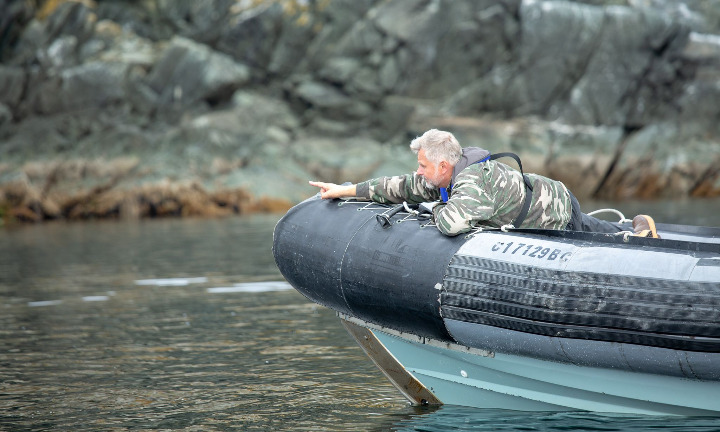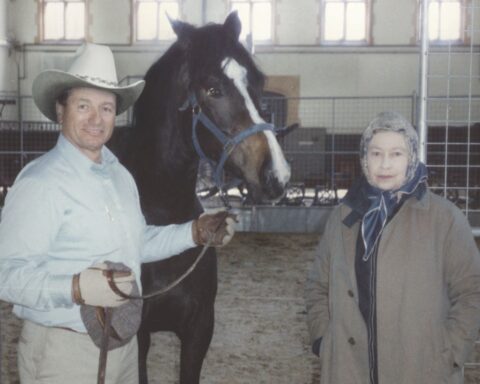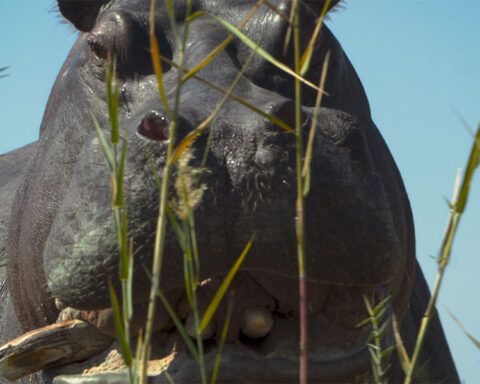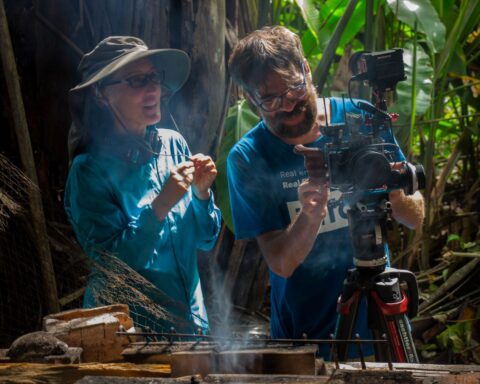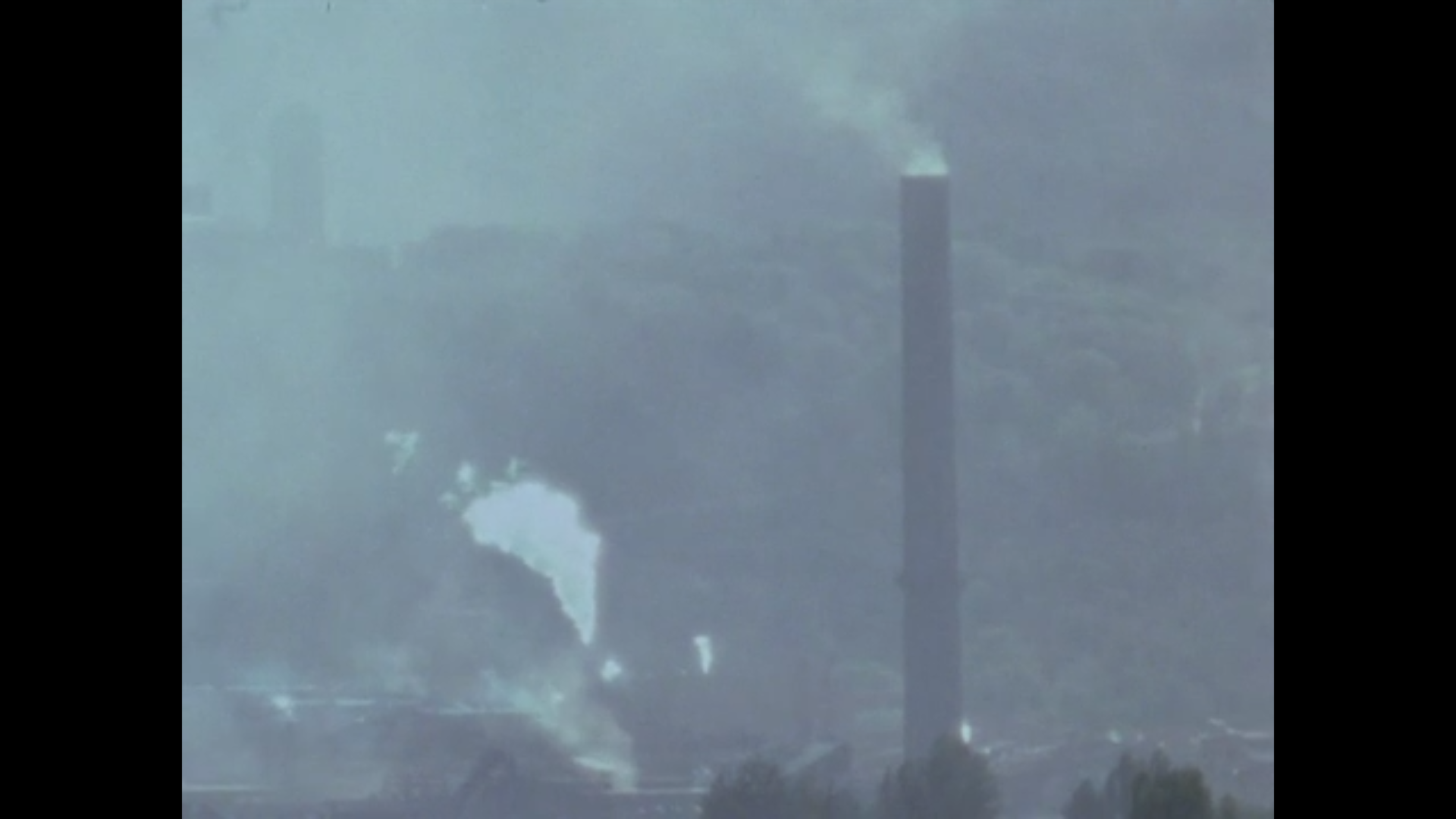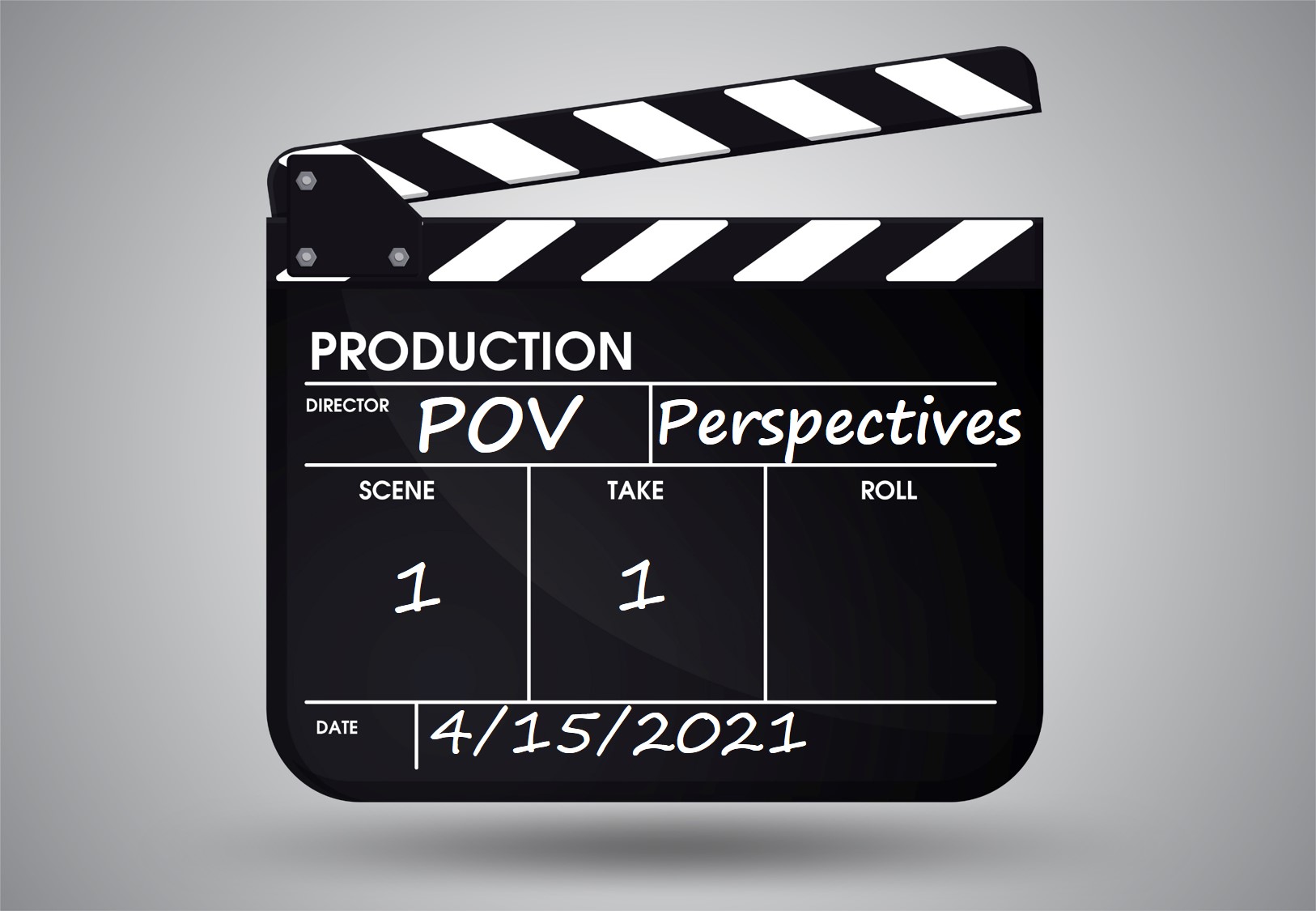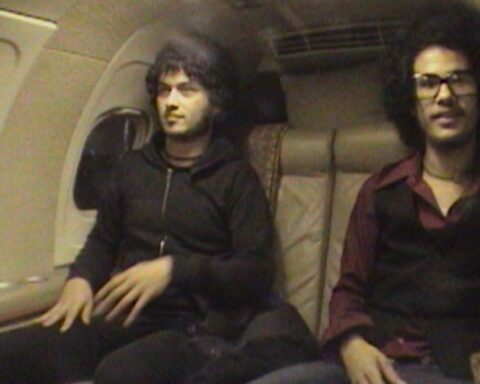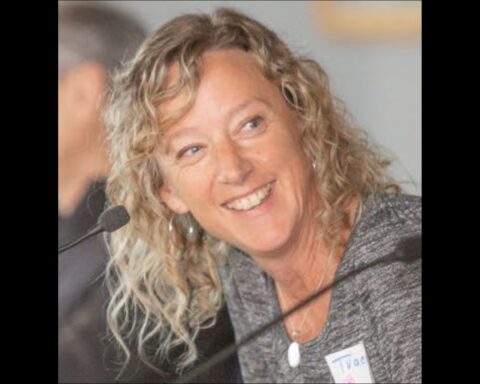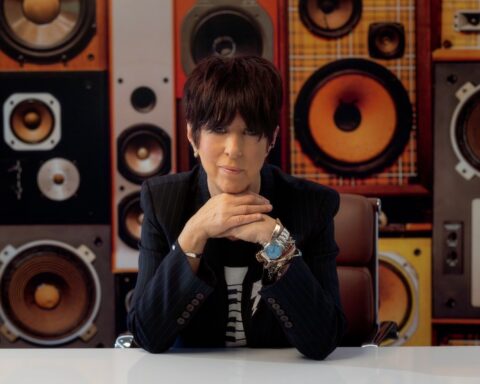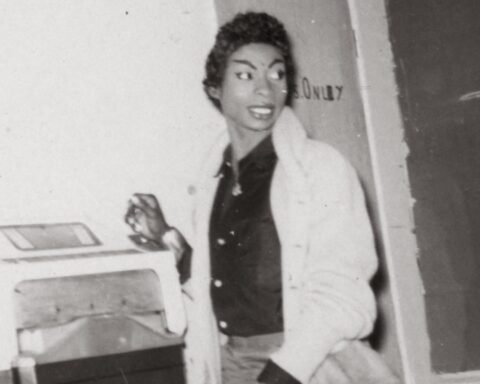Part 1: The Creative Development of Wild Pacific Rescue
By Andrew Munger
As White Pine Pictures’ Director of Unscripted Development, my primary responsibility is to create, develop and pitch new documentary and factual programs to Canadian and international broadcasters and streamers. In early 2018, I was developing several wildlife and natural history series with story producer Maya Bilbao and researcher Sarah Michael. Together we compiled a research binder of 25 potential series. We spent several months pursuing these leads which took us down many dead ends but eventually led us to the Vancouver Aquarium’s Marine Mammal Rescue Centre (MMR).
The MMR is a unique veterinary facility dedicated to rescuing, treating, rehabilitating and releasing injured and distressed marine mammals all along the British Columbia coast. It’s led by Dr. Martin Haulena, Chief Veterinarian of the Vancouver Aquarium. “Dr. Marty” is a local hero and there’s actually a Dr. Marty doll in the Aquarium gift shop. Over the past ten years, Dr. Marty and his team have rescued and treated a wide variety of marine species including whales, porpoises, sea lions, harbour seals and even non mammals like sea turtles and octopi. Most animals are suffering from human carelessness or malice–caught in drift nets or plastic packaging. Some have been deliberately injured by humans using fire arms, explosives or cross bows.
After making contact with the Vancouver Aquarium, I began a six month courtship with the notoriously media shy organization. The Aquarium was nervous after some previous unpleasant experiences with journalists and filmmakers. It was my job to gain the trust of both Dr. Marty and Aquarium Communications Manager Deana Lancaster to convince them to allow us to follow and document the adventures of the MMR team. Once the Aquarium leadership agreed to participate in the series, White Pine COO Steve Ord negotiated an exclusive access agreement with them.
With the agreement in hand, in December, 2018, I went to Vancouver to meet Dr. Marty and key members of his team: MMR Manager Lindsaye Akhurst; Assistant Manager Emily Johnson; and Senior Veterinary Technologist Sion Cahoon. While there, I would direct the first of two development shoots, during which I had full access to Dr. Marty and his tight knit team as they performed extraordinary veterinary procedures on a wide variety of animals. As Head Veterinarian, Dr. Marty is responsible for the health of the animals who live at the aquarium, many of which have been rescued and rehabilitated, but can’t safely be released into the wild.
The concept for the series is to tell the story of this skilled team of animal care experts dedicated to saving, rehabilitating and releasing injured and distressed marine mammals. Our cameras would follow them from the rugged, beautiful B.C. coastline into the high tech operating room of the MMR. This would be the documentary equivalent to the scripted series Danger Bay.
It was clear to me from the outset that not only was this a fantastic, inspiring story of helping animals, but that we had a dynamite cast who would resonate with audiences. Their skills, passion, and dedication to the animals and each other was clearly evident. While the work was serious there was always a lot of humour, usually at Dr. Marty’s expense
In the fall of 2018, I began developing the key creative materials to pitch the show. I wrote the copy for the pitch deck and Sarah Michael did the layout. The creative was circulated internally at White Pine for notes and feedback. I identified multiple potential buyers for this series–National Geographic Wild, Discovery, Animal Planet, Blue Ant’s Love Nature, CBC and the Smithsonian Channel. We created multiple versions, tailored for the different broadcasters in order to reflect their programming priorities. What Animal Planet wants in the animal/vet space is very different from Love Nature.
The most important creative element is the “teaser” or “taster” tape. Luckily we had great footage and sound bites from the development shoots as well as high quality video and stills from the Aquarium’s media archive. In the end, we cut several different versions of the “teaser,” as we’d done with the pitch deck. We tested different names: Dr. Marty, Aquarium Vet; Wild Pacific Vet, before landing on Wild Pacific Rescue. In addition, we cut a “character reel” that highlighted the personalities of our potential key characters.
I took the lead pitching Canadian broadcasters: CBC, Blue Ant, Knowledge Network and Discovery Channel. For U. S. sales, I worked closely with White Pine’s U.S. agent, Andrea Eisen of Hibiscus Entertainment. Andrea is a former U.S. broadcast executive with great relationships with the U.S. brands, and has worked with many Canadian producers in the past, so she was the ideal person to help shape this strategy. We travelled together to New York and Washington, D.C, the homes of most of the American unscripted brands. What followed was many pitch meetings, follow ups, and conference calls.
In early 2019 I submitted the project to the Sunnyside of the Doc natural history pitch forum in La Rochelle, France, and it was accepted. In June, White Pine President Peter Raymont and I travelled to La Rochelle for the conference. I pitched the project very passionately to a room full of international natural history and wildlife executives. I truly believed this was an important and entertaining series and I had committed to bringing the story of the Rescue Centre to a wide audience. The response to my pitch was very positive and generated a lot of interest. The most tangible interest came from Alyson Barratt, commissioning editor at Love Nature. We met right after the pitch, and she expressed a strong interest in commissioning the series. Follow up meetings, including one at Love Nature’s Washington D.C. office helped close the deal.
Important parts of securing a broadcast partner are the budget, finance and production realities. Stephen Paniccia, White Pine’s Director of Finance and Production Head developed the budget and a draft production schedule, while Steve Ord worked out the financing, with proposed participation from Love Nature, Blue Ant International and Cottage Life Television. Love Nature’s Carlyn Staudt, Samantha Linton of Blue Ant and Alyson Barratt were the key executives who supported the show while Love Nature’s James Manfull would be the main contact during prepare and production.
Now that we were getting a production green light, I began the search for the series producer or showrunner to hand over the show. I met many incredibly talented filmmakers. Once I completed the initial vetting I presented the short list of recommended candidates to my White Pine colleagues for approval, and then to the broadcaster. Through this process we selected highly experienced series producer Michael Sheehan as our showrunner and I began the onboarding process, which primarily involved getting Mike up to speed on the research, stories and cast. Luckily Mike was travelling back from Asia to Canada when I gave him the news, and was able to schedule a stop-over in Vancouver to meet the cast and see the Aquarium and MMR.
Part 2: Shooting Wild Pacific Rescue
By Michael Sheehan
A showrunner-director makes an undeniable impact on a production but let’s be frank: on a commercial series like Wild Pacific Rescue, the showrunner is no auteur. In reality, he or she works for powerful, smart people who are strongly invested in the series’ creative outcome. So my first task was to assess my executives’ expectations. They matter.
I reviewed Andrew Munger’s sales material, had an audience with White Pine Pictures’ Peter Raymont, and conferred with my Production Executives (PE) at Blue Ant Media and Love Nature. The creative consensus was clear: the ideal stories should be high-action, fast-paced marine mammal rescues at sea. Stories should have life-or-death stakes and happy endings. Tonally, the series should feel smart, 100% authentic, with a sprinkling of charm and humour. My talented PE James Manfull at Love Nature stressed the need to “see hands on the animals,” because viewers crave that intimacy. PE Sam Linton at Blue Ant Media asked that the series have factual takeaways about animal behaviour and many “epic, iconic British Columbia visuals,” with the pristine Canadian coastline to help drive international sales. And everyone expected animal variety, showing the rescue or treatment of as many different types of creatures as possible. With the group’s creative expectations clear, it was my task to make it all happen. I had around 40 shoot days in the budget and 8 months to make delivery.
Next up was meeting the cast and making friends with them. “I’m like the new kid at school,” I joked. “I’m just trying to fit in.” This cast of marine mammal veterinarians and technologists at the Marine Mammal Rescue Centre are hard-working, funny and tight-knit. They were excited about making the series. But they had no idea know how much work this would be for them, on top of their demanding jobs.
With help and humour from Producer Susan McGrath, I hired crew and geared up. Alastair Meux, a talented hard worker, was chosen as our highly experienced director of photography (DP). To save money, I’d use a rotating second camera operator as needed, mostly on complex recues at sea. We had two Black Magic Ursa cameras and two GoPro kits to mount or submerge as needed. A location sound mixer would lav (use Lavalier mics) everyone each day. Every lav was to run to my comtek earpiece so I could hear all cast dialogue. An audio boom pole was too intrusive, so I cut it out. As backup for the lavs, we used two on-board Sennheiser shotgun mics, running on a separate channel to the mixer. I prefer working with a director’s monitor so White Pine gave me a portable wireless Odyssey to monitor blocking and framing. Stylistically, almost everything would be shot hand-held (no sticks) for added energy and because the production was run-and-gun. We would need to move fast.
Call time on Day 1 was 6am at the MMR. It was late July, the height of harbour seal pupping season and the busiest time of year at the MMR. My mixer lav’d MMR Manager Lindsaye Ackhurst and, right on schedule, her switchboard received a call. A beach-comber had spotted an orphaned seal pup on Spanish Banks beach. It had lost its mom and was bleating in distress for days. Lindsaye and staff prepared to go rescue the little pup.
The creative process at story inception is critical but rote: give the editors the pieces they need to clearly lay out objectives and stakes without relying on the narrator to explain everything. I often joke that a director is a waiter for editors. My job is to get them everything they need. In this case, I got our editors an on-the-fly (OTF) interview with Lindsaye, had her say where she was going, and had her establish urgency. Then I filmed her talking to her staff about everything they knew about the little pup, and what needed to happen next. While filming these story set-ups if I don’t hear the cast say the right key words, the right nouns, the right place names in the right tense, I ask them to talk to each other some more. “Talk a bit more please,” I’d ask, adding, “I know. I’m already a professional pain in the ass.” They smiled, kept talking amongst themselves and eventually gave me what the scene required. “Ok, cut. Thanks!” And with that, we all jumped in the MMR rescue van to go on our fist inner-city seal rescue. The sun shone. The pup had unique medical problems and the first rescue shot well.
Before long I was tracking 13 similar harbour seal rescue stories from rescue through rehab. I followed their progress and setbacks, knowing that with luck we’d watch them fatten up enough to release back into the wild. Some seal stories I stuck with, others I let go, but the hope was that over the summer a few of these 13 baby seal stories would have some medical twists and turns and become compelling enough to make the cuts. Many did: we had a fighting one-eyed seal, some true tragedies and an outrageous hi-tech surgery to save the life of a very naughty, very hungry seal named Sealy Dan.
Meanwhile, Dr. Marty and his staff performed surgery on a world-famous baby sea otter named Joey Clamchops. That ever-noisy, impossibly cute little otter has millions of social media followers. With two cameras cross-shooting during the surgery and a Go-Pro overhead, we filmed an astonishing umbilical procedure on Joey to prevent a potentially deadly infection. To everyone’s surprise, the surgery had a potentially fatal twist. It was heart-stopping TV.
After several weeks of shooting I was getting high stakes and heart-warming stories. That was positive, but I had another creative problem to solve: the Rescue Centre is located in a hardscrabble industrial port area in the Vancouver’s Downtown East Side. It looked like hell in there. Everywhere the camera turned, it picked up industrial plastic holding pools, asphalt and steel fences. Hardly the “epic, iconic British Columbia” that helped Andrew sell the series. Even finding beautiful backgrounds for OTFs was tricky down there. I was getting story but so far no beauty.
Execs scrubbed through the raw footage shot at the MMR, noticed the drab look and expressed concern. It didn’t help that we shot in Pro-res HQ Log to allow maximum freedom to colour-correct during post-production. The low-contrast raw footage would look better once corrected, but the dailies looked extra rough. To the execs, so far this didn’t look like the show we sold. That was alarming to some, but good clear stories are harder to produce than beauty. Hire strong story directors who can get material to the supervising story producers (Hugh Hardy and Stephanie Pickering) to paper edit as soon as possible, then ‘catch up’ on beauty shots later.
With solid stories coming in I felt certain I was getting a series, so I pivoted and scheduled several days of beauty and drone shoots up and down the BC coast to beautify the cuts. We also commissioned a drone shoot over the MMR and surrounding Industrial Portlands. In the moody sunset at 200 feet, the MMR and freighter docks suddenly looked gorgeous.
The overall ‘look’ of many factual series is created with inter-scene transitions, using at least three good beauty shots per transition. Once I had captured the gorgeous BC shots, and the drone shots in particular, I knew our talented picture editors would use them to make the series look stunning, and make my execs happy again.
My larger production problem was we were a full four weeks into the shoot and I still had no Steller sea lion disentanglements (‘detangs’) at sea. We needed a minimum of three solid detang stories, one for each 50-minute episode. On August 24, Head Vet Dr. Marty called to tell me they’d try to detang a sub-adult Steller sea lion with a bright white hard plastic bucket ring stuck around his neck. They called him Buckethead. As Buckethead grew and grew, he was choking to death.
Buckethead was last spotted by whale watchers on Vivian Island near a picturesque logging town named Powell River. Early the next morning, I took the TV crew in three vehicles on a series of ferries up the Sunshine Coast. It took most of a day to get to Powell River. We overnighted there in a less-than-glamorous motel by the city port. Early the next morning everyone else arrived. As I stood on the dock that morning with my crew, I now had in front of me three 25’ state-of-the-art rigid hull inflatable zodiacs with twin 200hp outboards, six Department of Fisheries Enforcement Officers (DFO), some with guns and flak jackets, my own chase boat captain, Mike Walsh, and five MMR cast. Everyone was here to work as a team, locate Buckethead, tranquilize him with a dart gun, haul him unconscious to the side of a boat, cut the strangulating ring off his neck and set him free.
The detang would be a fast-moving high stress job for everyone involved. By any standard, there was a huge amount of resources in play. Personally, I worried about missing the critical detang moment, so I drew a diagram and called a group huddle with Dr. Marty and the three boat captains. I pointed to my drawing and said, “Guys, when you cut the plastic ring off the animal’s neck, I don’t want to miss the shot. Can you try to position the boats like this so I can see?”
The DFO boat captains studied my drawing, shrugged their shoulders and said, “Look, Mike. Everything depends on the welfare of the animal.” I would have to take my chances, stay nimble and hope the shot lined up in our favour. A factual director can only try to hide the stress and keep smiling.
Before we cast off, I filmed an MMR team meeting and OTFs to set up the story. Then all three boats cast off in search of Buckethead, A and B cameras still rolling. That’s when the A camera inexplicably froze. Alastair’s Black Magic Ursa was still rolling but not a single button would respond. He couldn’t cut, so he had no choice but to power off. When he powered back up, the entire preceding shot was forever lost. It was a bit of panic, but I hid the problem from the cast so we didn’t look incompetent. Turns out boat radar can cause Black Magic cameras to malfunction. I asked the Captains to turn off their radar, and our camera operators agreed to cut and re-start regularly during the day to minimize risk of more losses. We pushed on to Vivian Island to look for the distressed animal.
Vivian Island was teeming with sun-drenched sea lions and though there was no sign of Buckethead, the footage was gorgeous. Digital cameras like the Ursa see deep into the ultra violet and infrared spectrums, so Alastair used a combination UV/IR filter to keep the colors true and reduce distant haze.
A call came in. A DFO officer had spotted Buckethead on McRae Islet, 20km southeast. We all sped to the site. Sure enough, there was Buckethead lying on a warm rock, way in the distance. It was great news, except our chase boat was forbidden from going anywhere near him lest we scare him away. The rescue team was using huge binoculars and we only had a 200mm lens. I could barely see the target.
Then the wind and waves picked up dramatically. Not only was it now very difficult for Dr. Marty to shoot the dart accurately into the target, but DP Alastair warned me that all the wave action and boat rocking was making the long 200mm untenable. The footage was so rocky he said it might not be useable. I said stick with the 200mm. We had no choice. There’s no point in shooting a sea lion rescue if we can’t see the sea lion.
(Spoiler Alert)
As Dr. Marty crept in with his gun raised to put the dart in Buckethead, I had four cameras operating: B Cam on Marty’s Boat, GoPro on Marty’s head, a drone in the air and A Cam with me on the chase boat on the 70-200mm lens.
Dr. Marty took the shot and managed to dart the animal. The detang was on. The DFO boats closed in around Buckethead to start working on him, and to my delight they fell right into the formation I had hoped for.
There were whitecaps and high wind. Everyone was yelling as the boats crashed into one another in the swell, the half-conscious sea lion floating at the surface between two boats. On the 70-200mm, I could see the animal perfectly on my monitor, and Dr. Marty using a wire to saw off Buckethead’s plastic ring. This was the big moment! Then suddenly a wave pitched us, the huge rubber bow of an adjoining boat careened left and screened our shot completely. We were suddenly blind. “I got it!” I said to Alastair. I threw down my monitor to free up my hands, leaned out and strained to push the boat’s big bow out of our shot, putting everything I had into it and yelling loud at the cast to “Hold it!! Hold it!” In the stress of the moment rescue crew Emily Johnson screamed back “NO! NO!” and Dr. Marty added another “NO!” in for good measure and kept sawing. But by then I had pried the boats a few inches apart, held them tightly in place against the waves, and called out to Alastair, “Have you got eyes?!” “Yes,” he muttered, focused, still shooting and framing perfectly. After a few moments, Dr. Marty cut the ring loose, the animal was saved and everyone cheered. It was magical television. I was ecstatic.
In the end, Wild Pacific Rescue took about 45 days to shoot and eight months to deliver. I directed 19 complete stories and used the strongest 12 in the cuts. The White Pine execs seemed thrilled with what we collectively produced. Sam Linton loved the epic British Columbia visuals. James Manfull loved seeing hands on the animals. And the wonderful MMR cast were perhaps more thrilled than anyone. We had made their work matter and made them shine. But it was Andrew Munger, who created and worked so hard at selling the series for two years, who paid the greatest compliment, saying, “This is the series I imagined when I sold it.” To me that was the highest praise of all.
Wild Pacific Rescue premieres Wednesday, April 14 at 8et/pt on Cottage Life, which is now in free preview.




